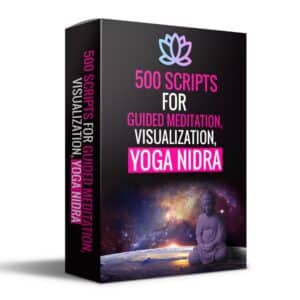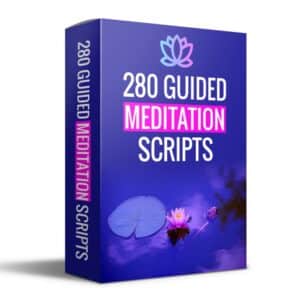Welcome to Your Grounding Practice
Hello! Grounding is a powerful mindfulness technique that helps you reconnect with the present moment, bringing your focus to the here and now. It’s particularly beneficial when you’re feeling overwhelmed, anxious, or disconnected. This worksheet will guide you through grounding exercises that you can use to stabilize your emotions and calm your mind.
Understanding Grounding and Its Benefits
Grounding techniques are designed to divert your attention away from negative or distressing thoughts and bring you back to the present. They can be especially helpful in managing anxiety, stress, and during moments of dissociation or panic.
Benefits of Mindfulness Grounding
- Reduces Anxiety and Stress: Helps you break the cycle of worry and fear by focusing on the present.
- Enhances Emotional Regulation: Assists in managing intense emotions and reactions.
- Improves Focus and Concentration: Anchors your attention in the present, enhancing your ability to concentrate.
- Promotes Calmness: Encourages a state of relaxation and peace, counteracting feelings of being overwhelmed.
Mindfulness Grounding Exercises
Exercise 1: The 5-4-3-2-1 Technique
What You Need: No special tools required.
Instructions:
- Acknowledge 5 Things You Can See: Look around you and mentally note five items you can see. Describe their colors, shapes, or textures in detail.
- Acknowledge 4 Things You Can Touch: Notice four things you can feel, like the texture of your clothing or the smoothness of a table. Pay attention to the sensations.
- Acknowledge 3 Things You Can Hear: Close your eyes and listen for three sounds. It might be the hum of a computer, birds chirping, or distant traffic.
- Acknowledge 2 Things You Can Smell: Identify two scents in your environment. If you can’t immediately smell anything, think of your two favorite scents.
- Acknowledge 1 Thing You Can Taste: Focus on one thing you can taste. It could be the aftertaste of a meal or drink or even the taste of your mouth.
Exercise 2: Grounding Stone
What You Need: A small stone, pebble, or any object that fits comfortably in your hand.
Instructions:
- Select Your Stone: Choose a grounding stone that feels right to you. It should be small enough to hold in one hand and have a texture or temperature you find soothing.
- Hold the Stone: Take the stone in your hand and focus on its weight, texture, and temperature. Notice its colors, shapes, and any imperfections.
- Sensory Focus: Close your eyes and concentrate on the sensation of the stone in your hand. If your mind wanders, gently bring your attention back to the stone.
- Carry It With You: Keep your grounding stone with you, especially during times when you might need a quick way to ground yourself.
Exercise 3: Grounding with Breath and Body
What You Need: A quiet space where you can sit or stand comfortably.
Instructions:
- Find a Comfortable Position: Sit or stand in a position that feels stable and grounded.
- Focus on Your Breath: Take deep, slow breaths. Inhale through your nose, feeling your abdomen expand, and exhale slowly through your mouth.
- Body Awareness: As you breathe, focus on the parts of your body that are in contact with the ground or chair. Feel the weight of your body supported by the earth or the furniture.
- Mindful Observation: Observe any areas of tension or relaxation in your body without trying to change anything. Simply be present with your physical sensations.
Integrating Grounding into Your Daily Life
- Routine Practice: Incorporate grounding exercises into your daily routine, even when you’re not feeling anxious, to build a habit.
- In-the-Moment Grounding: Use these techniques during moments of stress or anxiety to bring yourself back to the present.
- Mindful Transitions: Practice grounding when transitioning between different parts of your day, such as before and after work or social events, to stay centered.
- Share the Practice: Teach a grounding exercise to a friend or family member. This can enhance your understanding and provide them with a tool for managing stress.
Conclusion
Grounding techniques are a valuable aspect of mindfulness practice, offering a practical way to navigate challenging emotions and maintain a sense of calm and focus. By regularly practicing these exercises, you’ll develop a deeper connection to the present moment, enhancing your mental and emotional well-being. Remember, the key to grounding is consistent practice, so integrate these techniques into your daily life for the best results.
Discover the transformative power of mindfulness with our carefully curated collection of printable mindfulness worksheets and exercises. Each worksheet is designed to guide you through exercises that cultivate awareness, reduce stress, and promote emotional well-being. From grounding techniques to breathing exercises, these tools are your allies in navigating the complexities of daily life with a sense of calm and presence. Whether you’re a beginner or looking to deepen your practice, these printable resources are tailored to meet your needs.
Save up to 88% with our Bundles
Instant Download
- Digital Download
- Digital file type(s): 1x PDF
- Your files will be available to download once payment is confirmed

![Printable Grounding Mindfulness Worksheet & Exercises [PDF]](https://guidedmeditationscript.com/wp-content/uploads/2024/03/Printable-Grounding-Mindfulness-Worksheet-Exercises-PDF.jpg)
![Printable Mindfulness Worksheet & Exercises for Gratitude [PDF]](https://guidedmeditationscript.com/wp-content/uploads/2024/03/Printable-Mindfulness-Worksheet-Exercises-for-Gratitude-PDF-300x150.jpg)
![Printable Mindfulness Worksheet & Exercises for Control Thoughts [PDF]](https://guidedmeditationscript.com/wp-content/uploads/2024/03/Printable-Mindfulness-Worksheet-Exercises-for-Control-Thoughts-PDF-300x150.jpg)
![15,000 Positive Affirmations Bundle [PDF]](https://guidedmeditationscript.com/wp-content/uploads/2024/01/15000-Positive-Affirmations-Bundle-PDF-1-300x300.webp)

![150 Best Hypnosis Scripts [PDF] Bundle](https://guidedmeditationscript.com/wp-content/uploads/2023/11/150-Best-Hypnosis-Scripts-PDF-Bundle-300x300.jpg)

![200 Printable Mindfulness Exercises Worksheets Bundle [PDF]](https://guidedmeditationscript.com/wp-content/uploads/2024/02/200-Printable-Mindfulness-Exercises-Worksheets-Bundle-PDF-300x300.jpg)


![Printable Mindfulness Worksheet & Exercises for 5-Year-Olds [PDF]](https://guidedmeditationscript.com/wp-content/uploads/2024/02/Printable-Mindfulness-Worksheet-Exercises-for-5-Year-Olds-PDF-300x150.jpg)
![Printable Mindfulness Exercises & Worksheet for Anxiety Relief [PDF]](https://guidedmeditationscript.com/wp-content/uploads/2024/02/Printable-Mindfulness-Exercises-Worksheet-for-Anxiety-Relief-PDF-300x150.jpg)
![Printable Mindfulness Exercises & Worksheet for Emotion Regulation [PDF]](https://guidedmeditationscript.com/wp-content/uploads/2024/02/Printable-Mindfulness-Exercises-Worksheet-for-Emotion-Regulation-PDF-300x150.jpg)